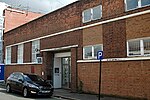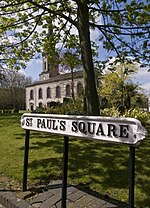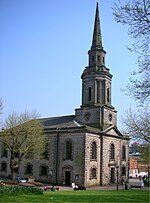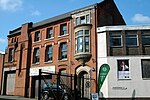Royal Birmingham Society of Artists
1821 establishments in England1821 in art19th-century art groupsArt museums and galleries in Birmingham, West MidlandsArt societies ... and 7 more
British artist groups and collectivesCharities based in Birmingham, West MidlandsClubs and societies in the West Midlands (county)Organisations based in England with royal patronagePages with timeline metadataTourist attractions in Birmingham, West MidlandsUse British English from July 2015

The Royal Birmingham Society of Artists or RBSA is an art society, based in the Jewellery Quarter in Birmingham, England, where it owns and operates an art gallery, the RBSA Gallery, on Brook Street, just off St Paul's Square. It is both a registered charity, and a registered company (no. 122616).
Excerpt from the Wikipedia article Royal Birmingham Society of Artists (License: CC BY-SA 3.0, Authors, Images).Royal Birmingham Society of Artists
Brook Street, Birmingham Jewellery Quarter
Geographical coordinates (GPS) Address External links Nearby Places Show on map
Geographical coordinates (GPS)
| Latitude | Longitude |
|---|---|
| N 52.4849 ° | E -1.9075 ° |
Address
RBSA Gallery (Royal Birmingham Society of Artists)
Brook Street 4
B3 1SA Birmingham, Jewellery Quarter
England, United Kingdom
Open on Google Maps










